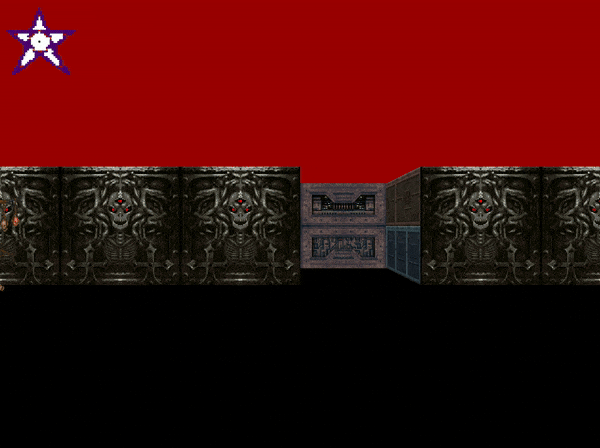cub3D is a project developed for 42 Heilbroon School.
C programming - ray casting - videogames - MLX42 library - map parsing - flood fill
In this project we had to create a videogame using the raycasting technique, C programming language and the MLX42 Codam library. For more info about the requirements, take a look at the subject contained in this repo.
The project covers the following topics:
As the project subject specifies, the input map has to be correctly validated: map file format, texture identifier with correct paths and values, map sourrounded by walls, the existence of one Player (without duplicates). During the parser, the data is collected and stored into a so called t_cub3d structure. A thing that we handled in a particular way were the whitespaces inside the map. Since the subject doesn't specify exactly what to do about them, we decided to put a sprite in those spaces (something like an obstacle), and make them not walkable.
It was mandatory the use of MLX42 library, which handles the window and the images. For a deeper knowledge, I suggest to give a read to the official documentation of MLX42.
The core part in this project: raycasting. If you don't know what it is, you can start from the wiki page and try out the most famous videogame done with this technique: Wolfenstein 3D.
Like in any other project of 42, the memory allocated by has to be properly freed. No leaks are tolerated during evaluation. In this project I checked the leaks using a project of a school mate, which re-implements the malloc() function and traces the allocated memory. Take a look at the amazing project of iwillenshofer.
We built a mini-tester to have everything under control after debugging, cleaning and refctoring. So after some modifications, we could run the tester and check if everything was green as expected. The tester is written in bash scripting.
In the bonus part of the project we had to first implement the wall collisions (you understand correctly, we could take 100% also without wall collisions). We decided also to create doors which can be open and closed. The subject specified to create another separated version of the program, but we decided to develop it slightly different. We just added a particular rule in the Makefile which define a constant BONUS only when this rule is called. Then, in the program code, we added the functionalities by checking if this BONUS flag was set or not.
Try make randoom, a custom rule to put random texture inspired by the world of the original Doom (which actually is not made with pure raycasting).
Importante note: the game is developed at 42 school on macOS and it's not optimized to be executed on other platform. Because of this you'll have to wait until I mupdate the Makefile to set the correct dependencies and compilation flags.
- Clone the repository:
git clone https://github.com/ncasteln/42-cub3d
- Navigate to the
cub3ddirectory andmakeprogram, ormake bonusfor more funcionalities:
cd 42-cub3d
make bonus
According to the Makefile, this should compile the program, using the local version of the library. To get an idea about the dependencies of the library, I suggest again to read the MLX42 documentation.
- Execute it, passing a valid map as argument:
./cub3D maps/bonus_valid/bonus_9.cub
-
Move the player using
WASD, rotate witharrowsand terminate the program usingEsc. -
Don't be scared about the doomed world, it's just a game
lodev.org about raycasting, was our main tutorial to build it.
